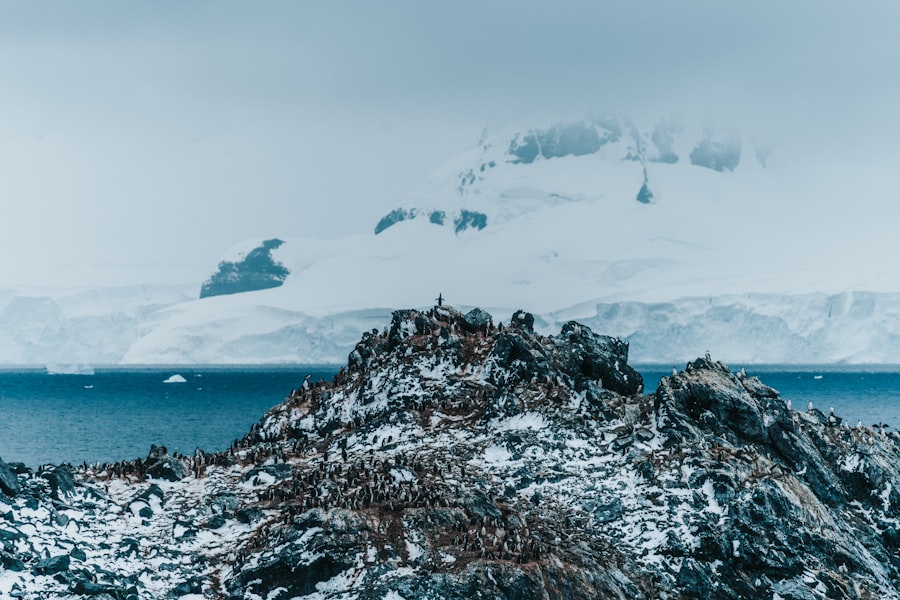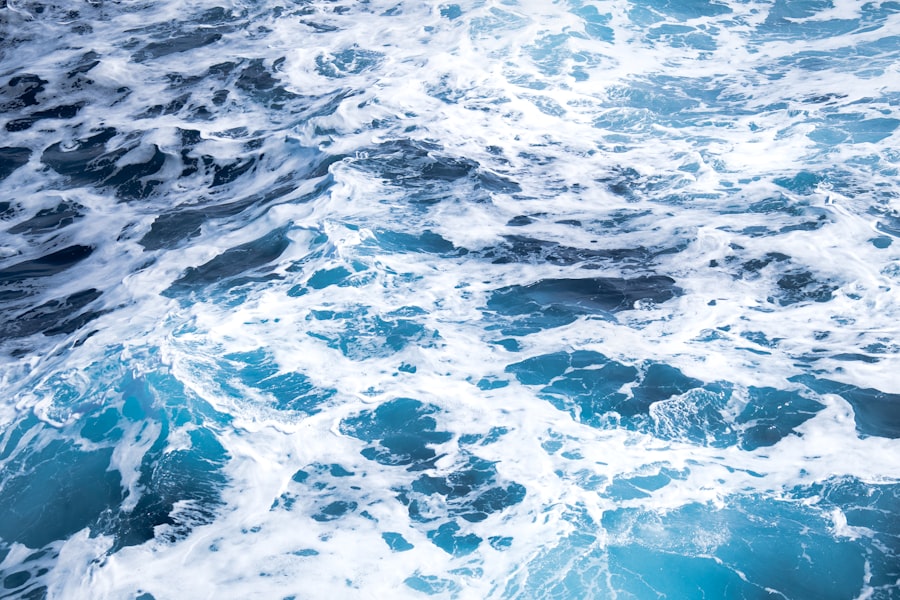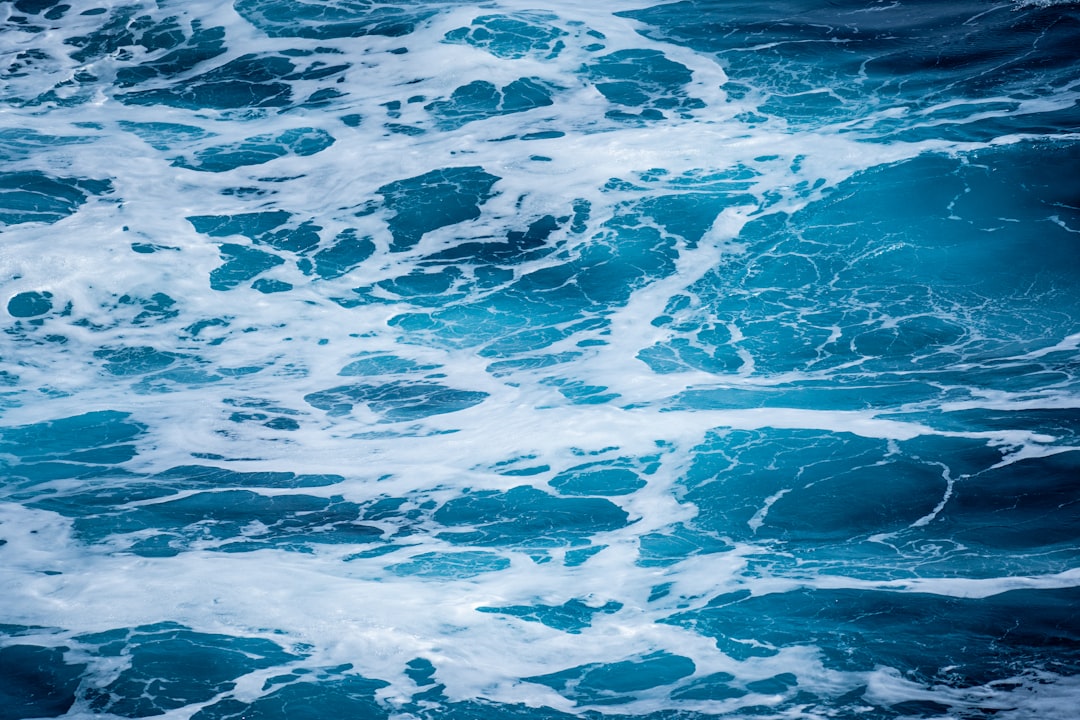The Drake Passage, a body of water situated between the southern tip of South America and Antarctica, is renowned for its tumultuous seas and significant role in global oceanic currents. This narrow stretch of ocean, measuring approximately 800 kilometers (500 miles) wide, serves as a critical conduit for marine life and climate regulation. It is often characterized by its unpredictable weather patterns and rough waters, making it both a formidable challenge for sailors and a fascinating subject for scientists and explorers alike.
As one of the most notorious maritime routes in the world, the Drake Passage has captured the imagination of adventurers and researchers for centuries. Its unique position at the confluence of the Atlantic and Pacific Oceans creates a complex interplay of currents and weather systems, resulting in some of the most extreme conditions on Earth.
The passage is not only a gateway to Antarctica but also a crucial area for understanding global climate patterns and marine biodiversity. The significance of the Drake Passage extends far beyond its geographical boundaries, influencing ecological systems and human activities on a global scale.
Key Takeaways
- The Drake Passage is a body of water between South America’s Cape Horn and the South Shetland Islands of Antarctica, known for its challenging sailing conditions and rich marine life.
- The passage is named after the English explorer Sir Francis Drake, who was the first to navigate these treacherous waters in 1578.
- Sir Francis Drake’s legacy is controversial, as he was both a celebrated explorer and a notorious privateer who plundered Spanish ships.
- The Drake Passage is a crucial link between the Atlantic, Pacific, and Southern Oceans, allowing for the exchange of cold and warm waters and influencing global climate patterns.
- The passage is a hotspot for scientific research on climate change, ocean currents, and marine biodiversity, but it also poses significant risks for ships due to its unpredictable weather and strong winds.
The Naming of the Drake Passage
The naming of the Drake Passage is steeped in maritime history and exploration. It was named after Sir Francis Drake, an English sea captain, privateer, and navigator who was the first to successfully navigate these treacherous waters in the late 16th century. His journey was not merely an act of exploration; it was part of a larger quest for trade routes and territorial expansion during the Age of Discovery.
The passage was officially named in his honor, reflecting both his adventurous spirit and the challenges he faced while traversing these turbulent seas. Drake’s legacy is intertwined with the very essence of the passage itself. His expeditions were marked by bravery and determination, qualities that resonate with those who dare to navigate these waters today.
The name serves as a reminder of the human spirit’s quest for knowledge and discovery, as well as the dangers that accompany such endeavors. The Drake Passage stands as a testament to the enduring impact of exploration on our understanding of geography and history.
The Legacy of Sir Francis Drake

Sir Francis Drake’s legacy is multifaceted, encompassing his contributions to naval warfare, exploration, and circumnavigation. Born in 1540, he became one of Queen Elizabeth I’s most trusted sea captains, known for his daring raids against Spanish ships and settlements. His most notable achievement was his circumnavigation of the globe between 1577 and 1580, during which he navigated through the Drake Passage.
This journey not only solidified his reputation as a skilled navigator but also opened new avenues for trade and exploration. Drake’s influence extended beyond his lifetime, shaping naval tactics and inspiring future generations of explorers. His voyages contributed to England’s emergence as a dominant maritime power, paving the way for further exploration of the Americas and beyond.
The legacy of Sir Francis Drake is not merely confined to historical texts; it lives on in the very waters he traversed. The Drake Passage remains a symbol of adventure and discovery, embodying the spirit of exploration that defined an era.
The Geographic Significance of the Drake Passage
| Aspect | Details |
|---|---|
| Location | Located between South America’s Cape Horn and the South Shetland Islands of Antarctica |
| Width | Approximately 800 kilometers wide |
| Importance | Acts as a major gateway for the movement of ocean currents and marine life between the Pacific and Atlantic Oceans |
| Weather | Known for its strong winds and rough seas, making it a challenging passage for ships |
| Research | Significant area for scientific research due to its unique oceanographic and ecological characteristics |
Geographically, the Drake Passage serves as a critical junction between two major oceans: the Atlantic and Pacific. This unique positioning allows for the exchange of water masses, which significantly influences oceanic currents and climate patterns across the globe. The passage is characterized by its deep waters, with depths reaching over 4,000 meters (13,000 feet), making it one of the deepest oceanic regions on Earth.
This depth contributes to its role as a key player in global ocean circulation. The significance of the Drake Passage extends beyond its physical characteristics; it acts as a barrier that separates two distinct ecosystems. The cold waters from Antarctica meet the warmer currents from the north, creating a rich environment for marine life.
This convergence zone fosters biodiversity, making it an essential area for studying oceanic ecosystems and their responses to climate change. The geographic importance of the Drake Passage cannot be overstated; it is a vital link in understanding both local and global environmental dynamics.
The Role of the Drake Passage in Climate and Oceanography
The Drake Passage plays a pivotal role in climate regulation and oceanography due to its influence on major ocean currents. The Antarctic Circumpolar Current (ACC), which flows around Antarctica, is driven by the unique geography of the passage. This current is crucial for distributing heat and nutrients throughout the world’s oceans, impacting weather patterns far beyond its immediate vicinity.
As such, changes in this current can have profound implications for global climate systems. Moreover, the passage serves as a natural laboratory for studying climate change and its effects on marine ecosystems. Researchers have observed shifts in water temperature, salinity, and nutrient levels in recent decades, all of which are indicative of broader climatic changes.
The Drake Passage’s dynamic environment provides valuable insights into how oceanic systems respond to external pressures, making it an essential focus for scientific research aimed at understanding climate variability.
The Discovery and Exploration of the Drake Passage

The discovery and exploration of the Drake Passage are intertwined with the broader narrative of maritime exploration during the Age of Discovery. While Sir Francis Drake is often credited with its navigation, earlier explorers had ventured into these waters, albeit with less success due to their treacherous nature. The passage remained largely uncharted until explorers like Drake undertook daring voyages that would ultimately reveal its significance.
Following Drake’s initial navigation, subsequent explorers continued to chart these waters, each contributing to a growing understanding of its geography and ecology. The passage became a focal point for expeditions aimed at uncovering new trade routes and territories. Over time, it evolved from a feared barrier into a vital thoroughfare for scientific research and exploration, marking a significant shift in humanity’s relationship with this formidable body of water.
The Wildlife and Ecology of the Drake Passage
The ecological richness of the Drake Passage is one of its most remarkable features. It serves as a habitat for diverse marine species, including various types of whales, seals, penguins, and seabirds. The nutrient-rich waters support an abundance of krill, which forms the foundation of the food web in this region.
This thriving ecosystem attracts researchers eager to study its unique biodiversity and understand how it is affected by environmental changes. The passage’s ecological significance extends beyond its immediate inhabitants; it plays a crucial role in global marine health. As a breeding ground for many species, including endangered ones like certain whale populations, conservation efforts are vital to preserving this delicate balance.
Understanding the intricate relationships within this ecosystem is essential for developing effective strategies to protect marine life in an era marked by climate change and human impact.
The Perils and Challenges of Navigating the Drake Passage
Navigating the Drake Passage presents numerous challenges due to its notorious weather conditions and unpredictable seas. Sailors often encounter strong winds, towering waves, and rapidly changing weather patterns that can turn calm waters into treacherous conditions within moments. These factors make it one of the most feared maritime routes in the world, earning it nicknames such as “the Roaring Forties” due to its fierce winds.
Despite these challenges, many adventurers are drawn to the passage for its beauty and sense of adventure. However, successful navigation requires skill, experience, and respect for nature’s power. Modern technology has improved safety measures for vessels traversing these waters, but caution remains paramount.
The perils associated with navigating the Drake Passage serve as a reminder of humanity’s vulnerability in the face of nature’s might.
The Cultural and Historical Impact of the Drake Passage
The cultural and historical impact of the Drake Passage extends far beyond its geographical boundaries. It has served as a backdrop for countless stories of exploration, adventure, and survival throughout history. From Sir Francis Drake’s daring voyages to modern-day expeditions aimed at scientific discovery, this body of water has shaped narratives that resonate with themes of courage and curiosity.
Moreover, the passage has influenced cultural perceptions of exploration itself. It embodies both the allure and danger associated with venturing into uncharted territories. Artists, writers, and filmmakers have drawn inspiration from its dramatic landscapes and rich history, contributing to a collective cultural memory that celebrates human resilience in the face of adversity.
The Scientific Research and Study of the Drake Passage
Scientific research in the Drake Passage has become increasingly important as concerns about climate change grow. Researchers from around the world flock to this region to study its unique oceanographic conditions and biodiversity. Long-term monitoring programs have been established to track changes in water temperature, salinity, and marine life populations over time.
The findings from these studies have far-reaching implications for understanding global climate patterns and marine ecosystems. By examining how species adapt to changing conditions in this critical area, scientists can gain insights into broader ecological trends that may affect oceans worldwide. The ongoing research efforts underscore the importance of preserving this vital region for future generations.
The Future of the Drake Passage: Environmental Concerns and Conservation Efforts
As awareness grows regarding environmental issues facing our planet, the future of the Drake Passage hangs in a delicate balance. Climate change poses significant threats to its ecosystems, with rising temperatures affecting marine life populations and altering ocean currents. Additionally, increased shipping traffic through these waters raises concerns about pollution and habitat disruption.
Conservation efforts are essential to safeguard this unique environment from further degradation. International collaborations among scientists, policymakers, and conservation organizations are crucial for developing strategies aimed at protecting marine biodiversity while promoting sustainable practices in shipping and tourism industries. The future health of the Drake Passage depends on collective action to address these pressing environmental concerns while honoring its rich history as a site of exploration and discovery.
In conclusion, the Drake Passage stands as a remarkable intersection of history, geography, ecology, and human endeavor. Its significance extends far beyond mere navigation; it serves as a vital component in understanding our planet’s climate systems while offering insights into marine biodiversity that are crucial for conservation efforts moving forward. As humanity continues to explore this formidable body of water, it must do so with respect for its power and recognition of our responsibility to protect its fragile ecosystems for generations to come.
The Drake Passage, a significant body of water located between the southern tip of South America and Antarctica, is named after the English explorer Sir Francis Drake. This passage is renowned for its challenging navigation conditions due to strong currents and unpredictable weather. For those interested in exploring more about the historical and geographical significance of the Drake Passage, you can find a related article on the topic by visiting com/sample-page/’>this page.
This resource provides further insights into the exploration history and the strategic importance of this maritime route.
WATCH NOW! Drake Passage: Earth’s Deadliest Waters Revealed
FAQs
What is the Drake Passage?
The Drake Passage is the body of water between the southern tip of South America (Cape Horn) and the South Shetland Islands of Antarctica. It connects the southwestern part of the Atlantic Ocean with the southeastern part of the Pacific Ocean.
Why is it called the Drake Passage?
The Drake Passage is named after the English explorer Sir Francis Drake, who is believed to be the first European to have sailed through the area in 1578.
What is the significance of the Drake Passage?
The Drake Passage is known for its rough and unpredictable seas, making it one of the most challenging maritime routes in the world. It is also a key location for the study of oceanography and climate due to its role in the circulation of water and air between the Atlantic and Pacific Oceans.
What kind of wildlife can be found in the Drake Passage?
The Drake Passage is home to a diverse range of wildlife, including various species of seabirds, whales, and seals. It is also a popular destination for wildlife enthusiasts and researchers due to its rich biodiversity.
